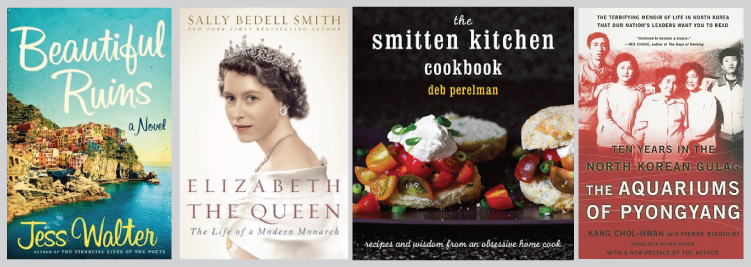You’ve written your book, taken it through the editing process, and you feel its finally time to send your hard work off into the world. Now you’re presented with a completely different task on the road to publishing your book–taking a snapshot of the world you’ve created and putting it on the front and center for people to look at. So what in the world do you actually put on your book cover? Do you keep it simple and clean, or splurge for an epic illustration? Lots of books do that fancy type stuff; should you do that too?
For the next couple of weeks, I’ll be focusing on the specific question you should ask and some of the options to answer. This hopefully will get your mind going when confronted with the “What now?” that immediately follows the exhilaration of having your book ready for publishing.
So what type of cover do you want?
Photographic Book Cover
Photo based book covers are predominantly found in history books (the general and biographical kind), young adult, and romance. Although, honestly, any genre can use the right photo to great effect.
Often the photo will be manipulated with certain textures, filters, or brushes to match the tone and type of the book within and to add a style. Think how many Western books employ sepia filters to their covers to give it a daguerreotype feel.
With photos, readers often will know exactly what setting they’re getting themselves into. After all, as the saying goes, “a photo is worth a thousand words.” I could spend a paragraph talking about a picture of a teenage boy and girl wearing modern clothing gazing into each others’ eyes and a cover with a photo more detailed than my description will tell a reader in a second that they’re looking at summer romance novel. The flipside to this is that photos can be too literal sometimes; restricting the reader’s imagination as to your novel’s setting or what your character looks like. Also, if you chose poor quality or an obvious stock image, then the overall cover will suffer and look less professional (and subconsciously less worthy of your reader’s time).
If you decide that this type of cover will be the best face of your book for your potential readers, then the choices get even more diverse. You’ll want to tailor your search for a photo or photographer who handles a specific type of photography like Portrait, Landscape, Macro, Vernacular (just to name a few).
Look at the wide variety of photo types to choose!
Typographic-Based Book Covers
Typographic books are primarily popular among non-fiction, poetry, and literary fiction. They are the type of cover that can be the hardest to pull off or the quickest, depending on your strategy. It risks being illegible from a distance and if you don’t know what to look out for, then it can look unprofessional. In fact, there’s an entire different language of terms used to describe different rules of typography such as kerning and leading. That being said, it can be an extremely creative and eye-catching outlet for your cover.
So many pretty words!
Illustrative Book Covers
In some ways, the illustrative covers are similar to the photographic cover in that your cover is conveyed in a single visual image that can stand alone as a work of art. The picture is the star, not the title or the author. Illustrative book covers are most often found in fantasy, literary fiction, graphic novels, middle school and children’s books.
As with photographic, you can show the reader what to expect in your cover with an illustrative, with even more creative freedom to portray creatures that can’t be traditionally photographed, like Bigfoot. You’ll need to marry the right illustrative style to your work, since many readers expect certain styles for different genres. Also, if you don’t hire someone on the top of their game, you could end up with a muddled mess.
There are so many different styles of illustration, that listing them could be a blog post in itself. In the meantime, here’s some different styles to get your brain working on what you might need:
And this is only a fraction of illustrative styles
All of the above types of covers can easily overlap with one another, with one taking a backseat to another. For example, you can have a typography that’s so fanciful that it borders on illustration. No one type of book cover is superior to another type. It’s simply a matter of which is the most suitable for your book. Which type of book cover will bring out the words within? Decide that, and you’re on your way to a published book.








